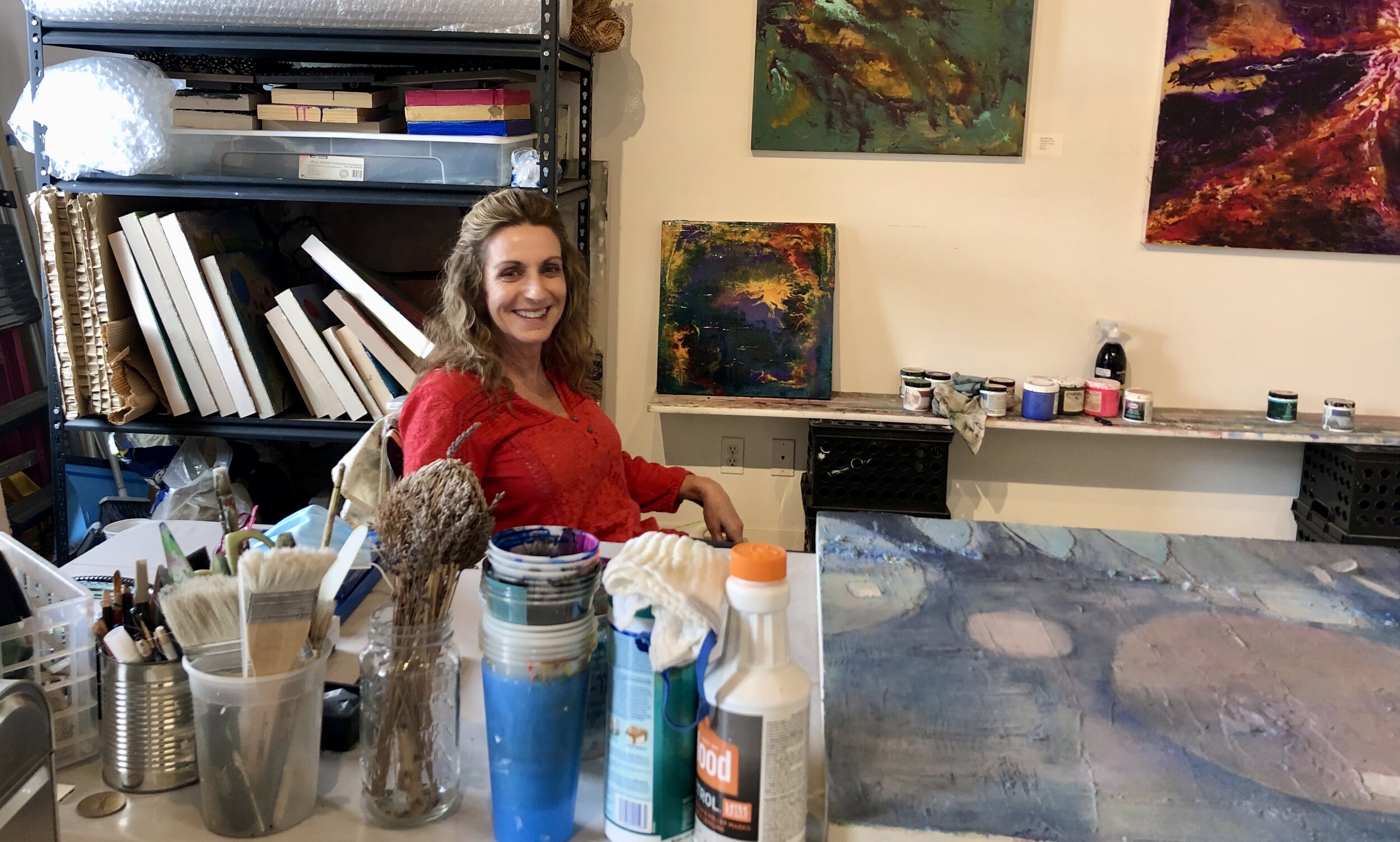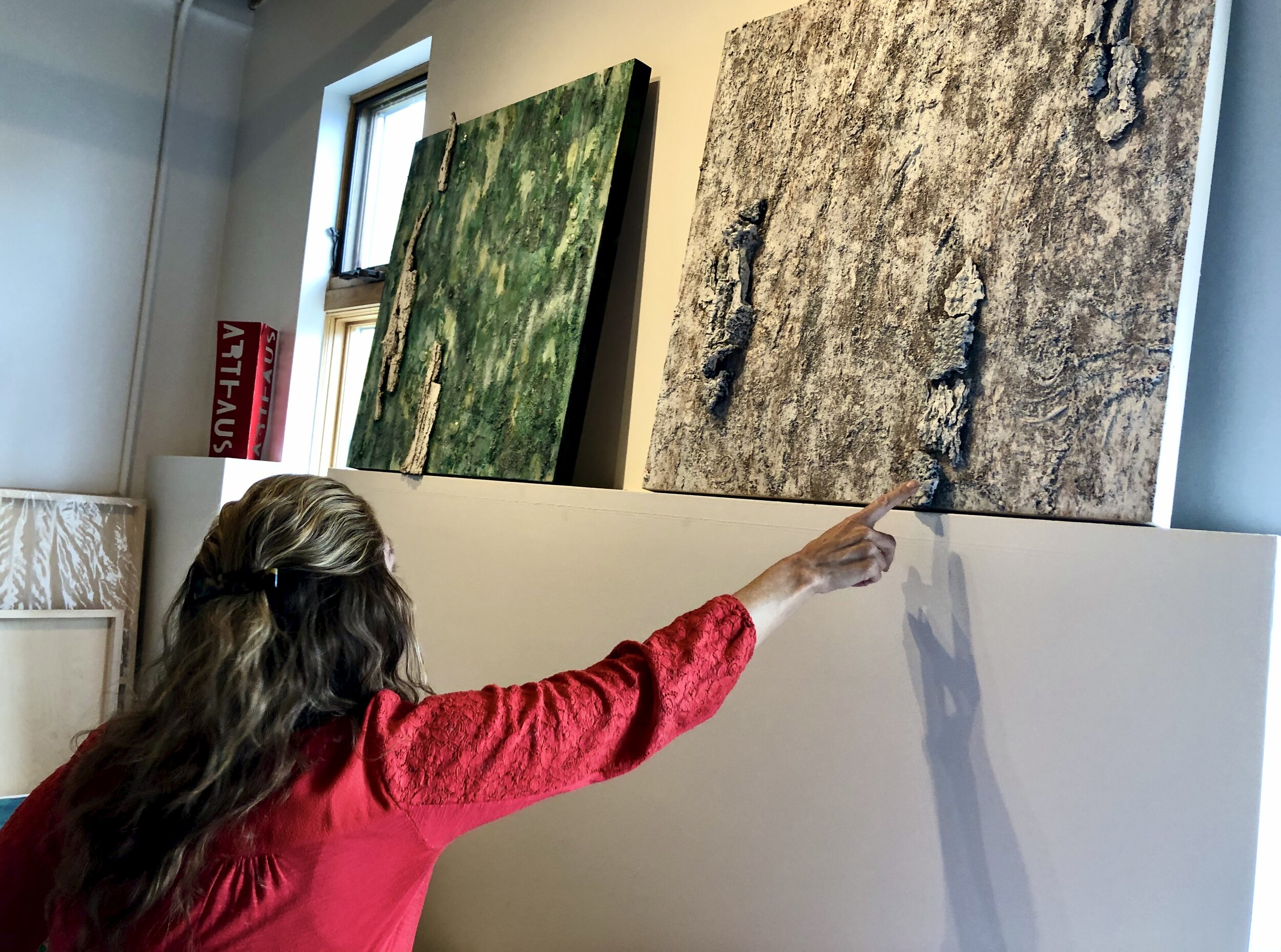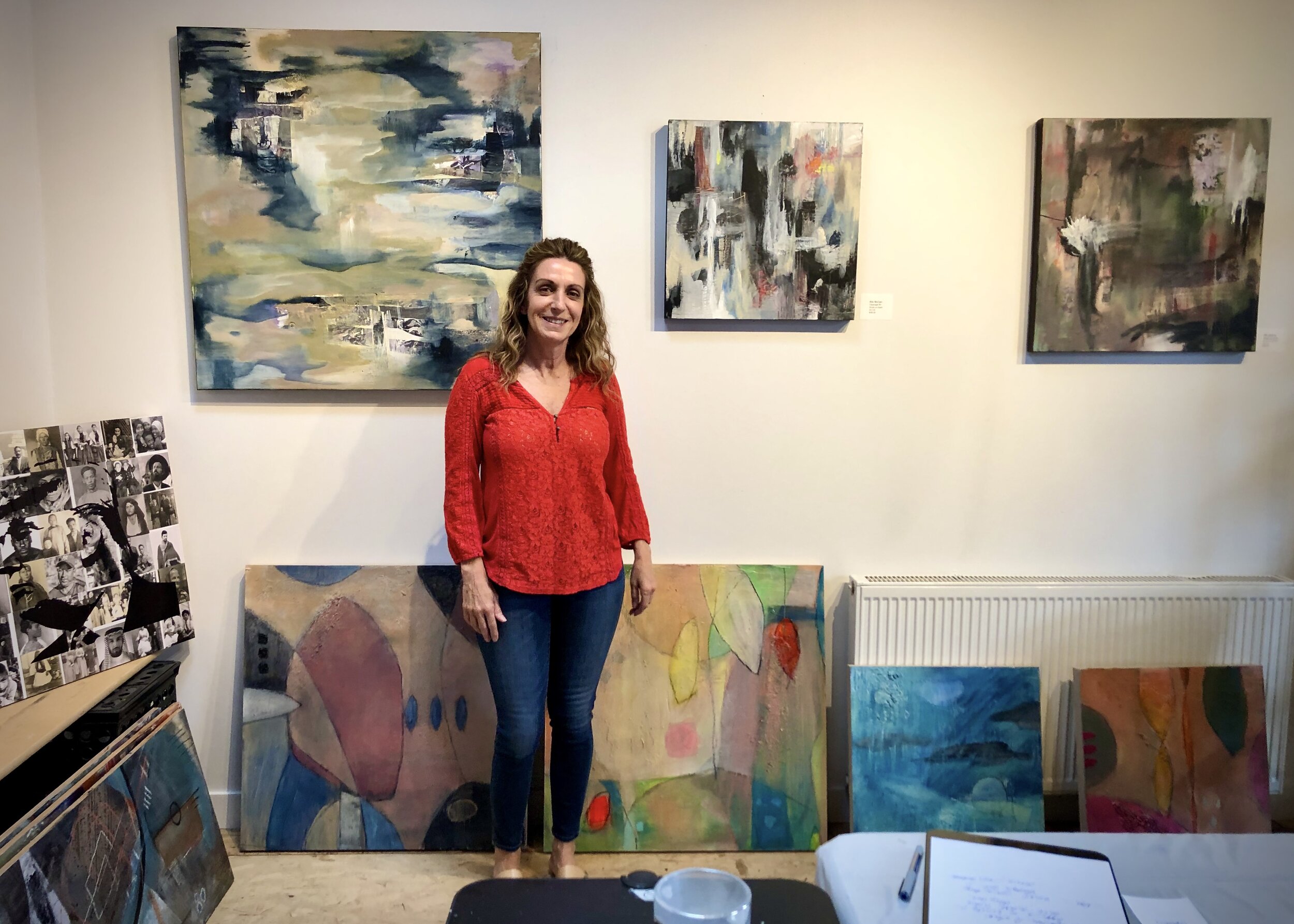With eight art districts in the city, and the upcoming Crush Walls 2020, Denver’s art scene is vibrant. It’s recognized hub - the Santa Fe art distric. On June 10, 2020, I had the opportunity to interview Aliki McCain in her studio on Santa Fe Drive.
When did you find out you were interested in art?
I've been interested in art all my life. I sold my first piece of art when I was in fifth grade. My art teacher bought that piece from me. He approached me and wanted to buy it. I have had a keen interest in art, I have always been creative from a young age. I lived in Europe for quite a few years, and I think that also was an influence. I traveled to many museums; I saw the Three Graces when I was a young child, and other famous statues and paintings. I always had a real interest in art.
What is your background? Self-taught or course work?
I am an art history major and a fine-arts major. Initially, I wanted to teach art history. I put myself through school at UC Irvine and pretty much ran out of funding. It was going to be another seven years of school to get my Ph.D. in art history, so I took the role of applied arts.
It wasn't an easy decision. When I was young, my stepfather was always very negative about my interest in art; he always said, "Oh, you will amount to nothing; that's a foolish thing to do." I think that this is typical for some families; parents want their children to follow a more traditional role and want them to be financially stable. The purpose of artists in society has always been somewhat fickle, one where they can't always make ends meet. You always hear about the starving artist. So I wasn't encouraged to follow art. I paid for my education, and I decided that I was going to follow what I was passionate about.
How do you work? Paint, canvas? Another medium?
I don't like to be boxed into any one thing. I am primarily a painter, but I do a lot of mixed media. I work with wood. I work with clay. I like to embed things in my paintings. As you can see here, there's rocks and stones, bark, and things that I find that appeal to me. I like texture in my paintings.
So there isn't any one particular medium for me, but I do primarily paint in acrylic paints, and I like to paint on board. I do paint on canvas as well, but I prefer board. I like how firm it is. I can get very aggressive with painting.
I use these types of brushes. As far as the process, for me it's getting in there, getting hands-on, that's really exciting for me. I like to think I bring the energy to the canvas or the board; the surface. I like to really get in there.
Do you work in a particular style or various styles?
I was trained as a photorealist. I did that for many years. It was a really enjoyable period of my art process, but at some point, I got to the place where I wasn't feeling the challenge anymore. It became easy and repetitive. That, for me, isn't what art is about. Art is a creative process, and it's problem-solving. Sometimes we create problems for ourselves in the art process, and sometimes the problems pose themselves. It's always about solving that problem on this surface with a particular painting.
I never wanted to get pin-holed into one style per se, but I did push myself to venture into abstract painting. It's been a lot of fun for me because I love color. It's been a great way for me to explore color and work with different palates and to also problem solve in a different way because you still have to bring the same principles of art to the process. You have to have an understanding of composition, and color, and line, and shape, and all the things that are present within any type of painting. It still has to be there, or else you won't have a successful painting. So it's the same thing, but just thinking abstractly. It's been exciting for me, and it's only been in the last 10 to 15 years that I have started abstract painting.
What is the latest work you completed?
These two (the paintings on the floor on either side of Aliki) were actually created during COVID. I'm excited about them because sometimes people think "Oh my gosh, it's a really dark time. We’re in COVID. Does your art reflect what's happening?" It does, but I chose to find a happier place to be and a more positive place to rest myself during the struggle of being inside, being really locked in. These two paintings, I really like them a great deal. I like the palates, I'm excited about the positive energy that comes out of them.
These three panels are three pieces that I worked on with Access Gallery. I teach over at Access Gallery, a non-profit for students with disabilities. We take people with disabilities that are artists, and we broaden their opportunity to get their art out to the community.
In this case, we were commissioned by a financial firm downtown. They wanted three pieces that were going to go into their conference rooms. We just need to get them framed. It's been difficult with COVID.
It's really fun working with this organization and it brings a lot of happiness. It's a great thing for me to be able to have that outlet, to be able to put my skill set to a purpose. (Does this paragraph refer to Access Gallery or the financial firm?)
What is your next project?
My next project is for a show in September. It revolves around the book Where the Crawdads Sing by Delia Owens. I've been asked to join a group that's going to bring visual imagery to the book. We are responding to the book as the prompt. That's going to be my next project.
Who are a couple or so artists you admire?
(Wassily) Kandinsky was always my first love in art. He wrote the book concerning the spiritual in art and also is probably the most renowned color theorist in the art world. He had a big influence on me and the way I approach art.
It's hard not to be influenced or think of Picasso as the great artist. Someone who had a style, but also someone who reinvented himself constantly. He didn't fall into the trap of having one voice. He used his work for beautifying things all the way to making political statements, and everything in between. I feel as somewhat of a kindred spirit with him in the way he approached art and the way it can be used. Some people think that art has to be used for beautification, or art should be used as a voice, as a platform, or is just self-serving. I think there much to think about when we think about art. Ultimately, I think it's a reflection of what's happening in society, or with the artist and where they are.
Right now, with what is happening socially, you will see many artists stepping up and making social commentary. It will be impossible not to. Music will have lyrics that represent something. 3D and 2D artists will start putting their voices out there. But it doesn't happen for all artists. It is individual. For me, the cherry on top is working with students with disabilities. It is a lovely thing for me. I learn so much from them, and hopefully, they learn a lot from me too.
(The interview was lightly edited for clarity.)










